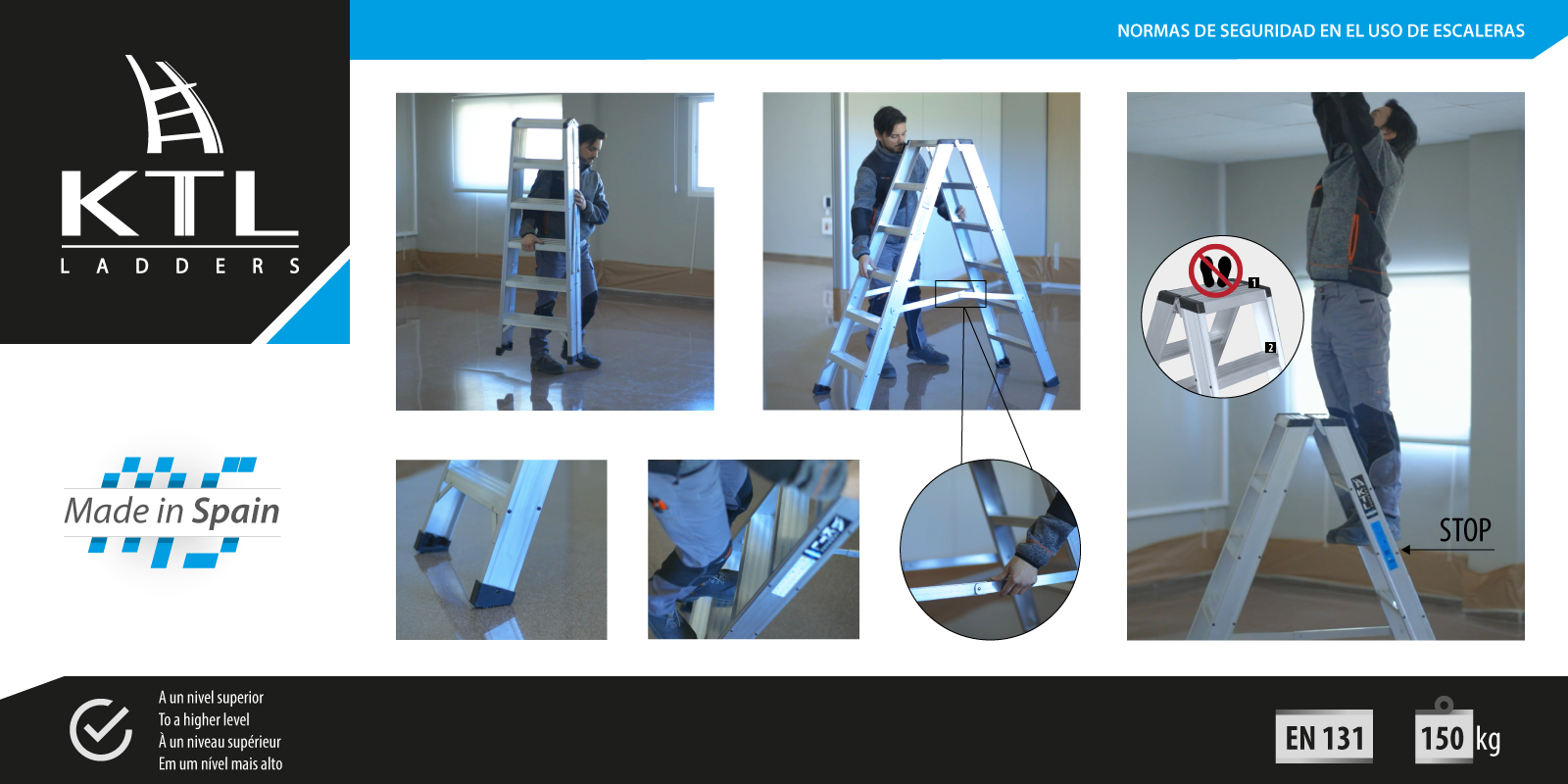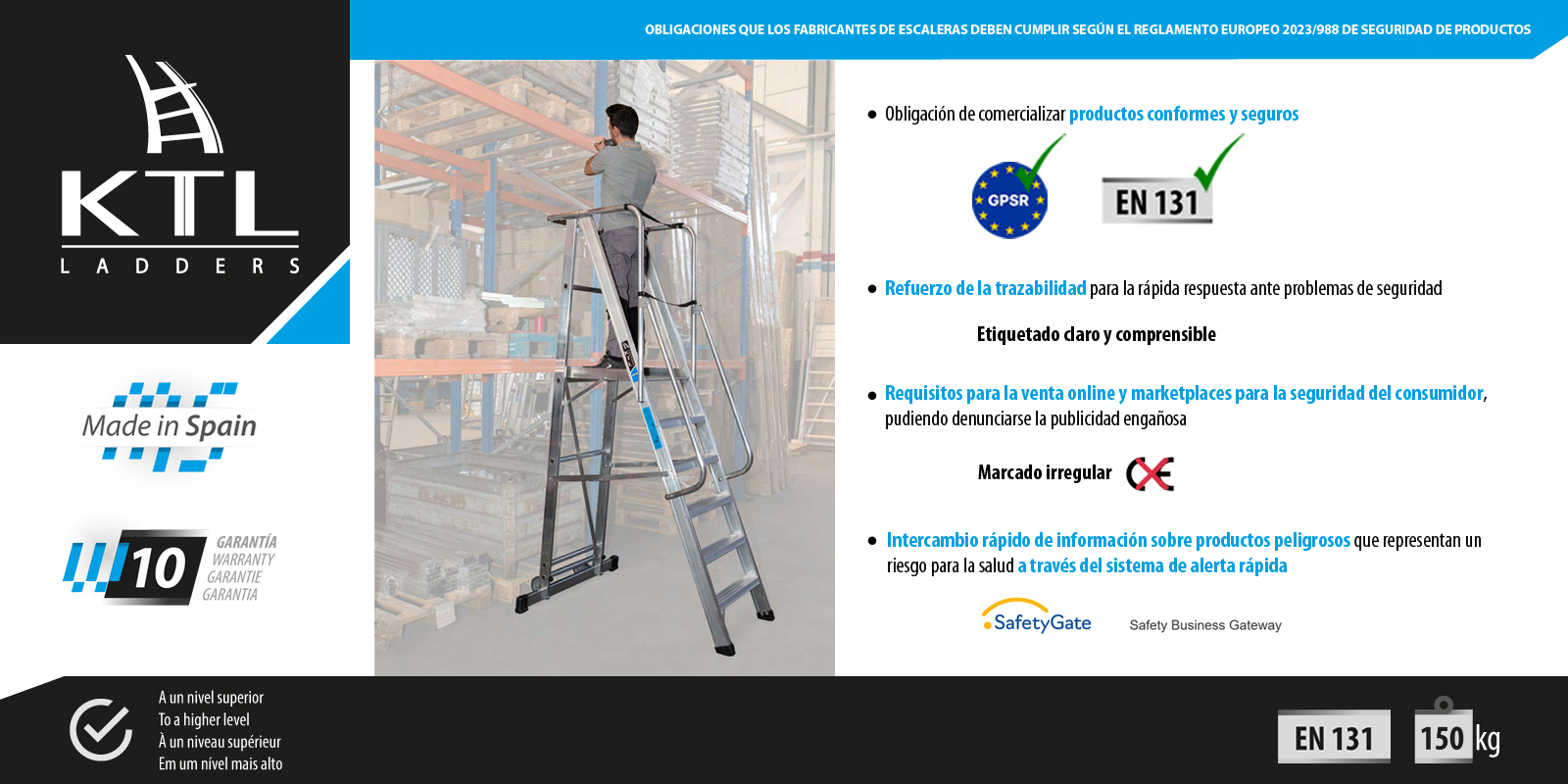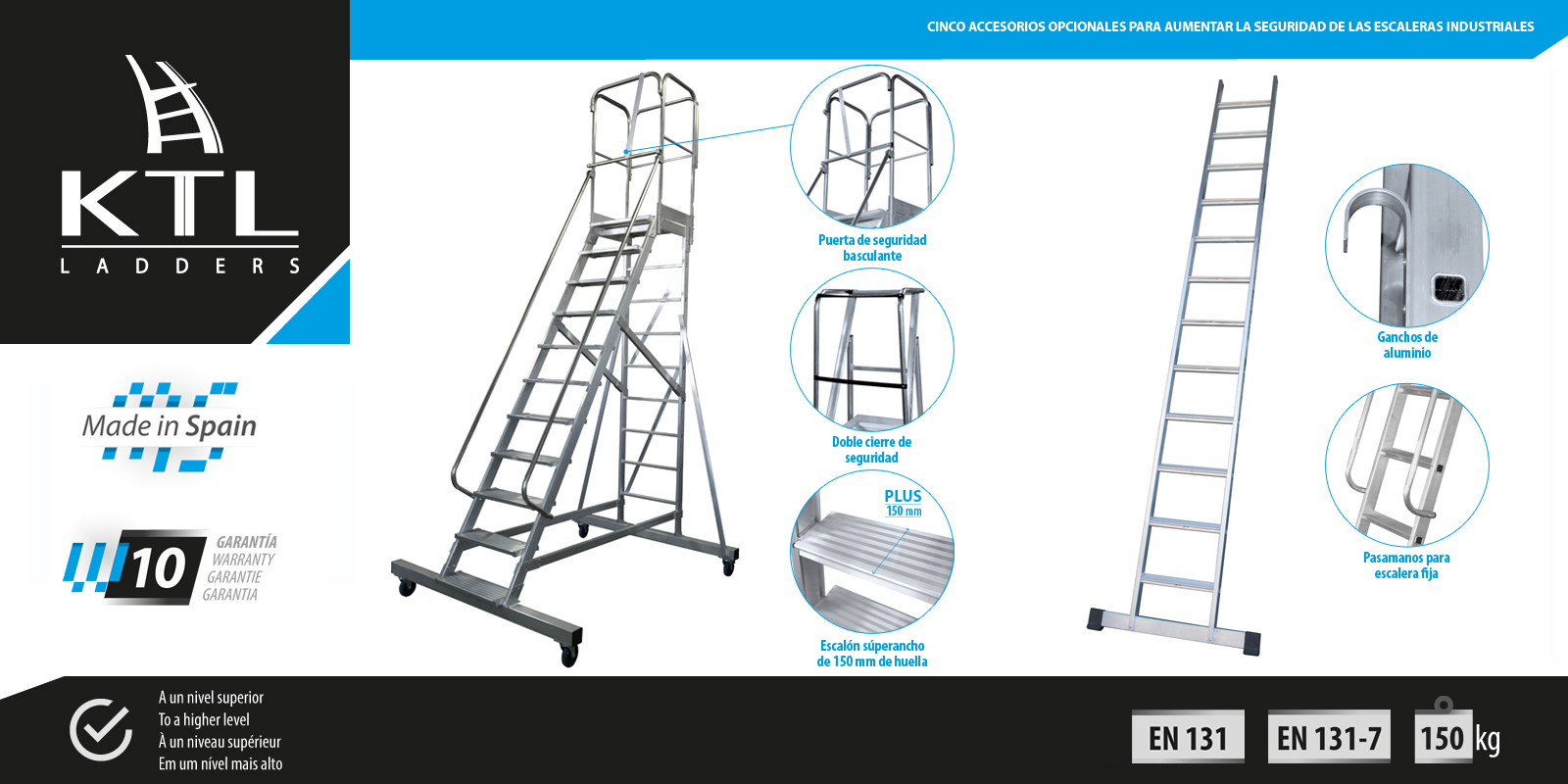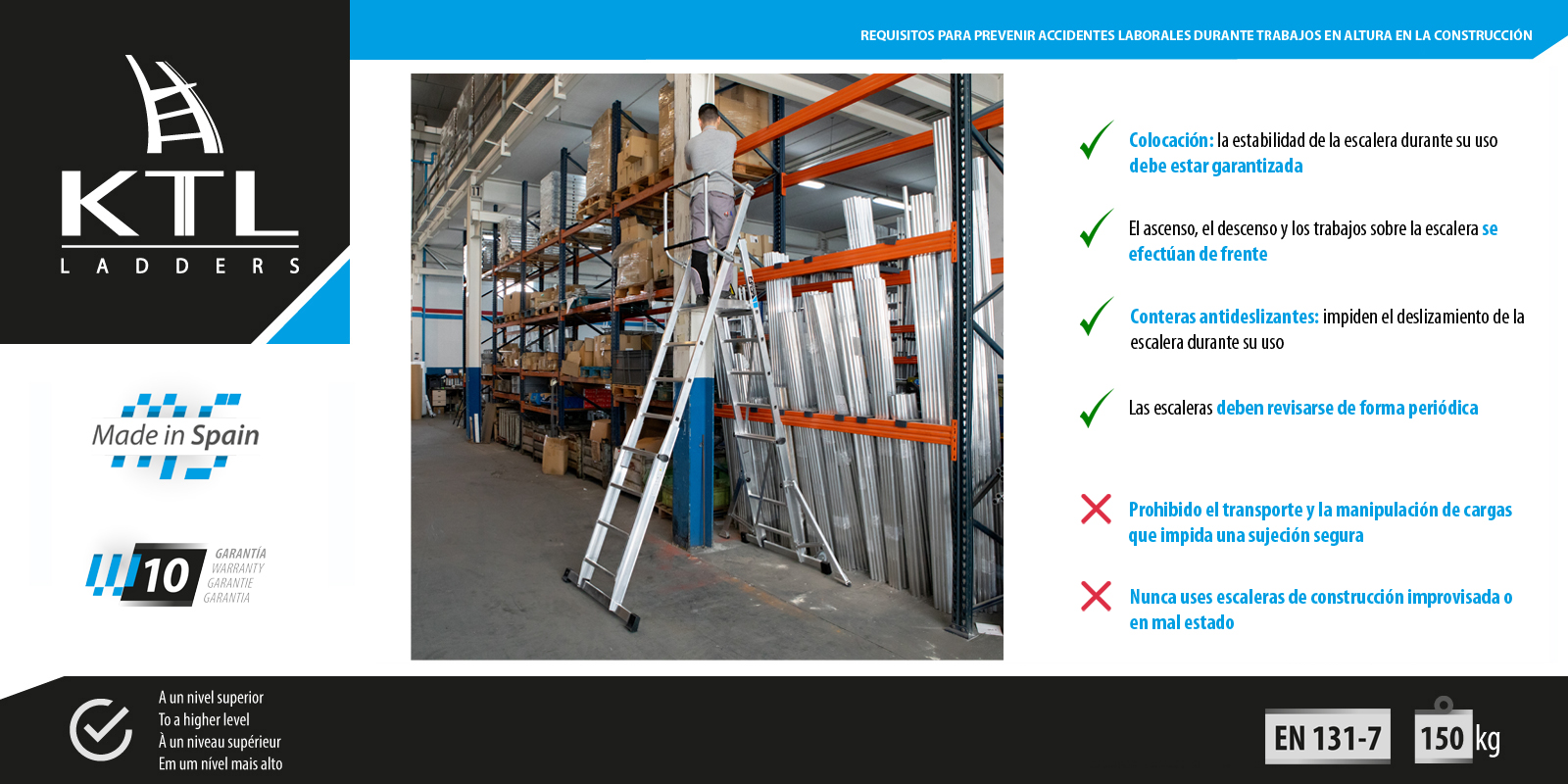Ladders have become a common element in the workplace. For this reason, in all activities related to maintenance, repair, or assembly, workers are often required to use ladders to perform tasks at height and carry out their daily functions. The National Institute for Occupational Safety and Health (INSST) defines work at height as any task ‘performed in a location above the reference level, where such a level is understood as the surface from which a worker could fall and sustain personal injury‘.
To ensure safety in work at height, companies must conduct prevention campaigns for all employees, aiming to make every worker aware of the risks associated with improper ladder use, whether they are work platforms, stepladders, combination ladders, or mobile ladders with platforms. Indeed, if safety standards for ladder use are not followed, a worker might experience a fall that could, in some cases, have irreparable consequences. However, in addition to the need for companies to check compliance with regulations, the final responsibility lies with the worker, who must recognize the importance and duty of using the ladder responsibly from the moment they climb it.
At times, stress or urgency to complete a job quickly may cause workers to pay less attention to safety rules and violate ladder use regulations. When arriving at their worksite, users should pay attention to where they place the ladder, its angle, and even its condition. At KTL-Ladders, we recommend that workers take their time to ensure everything is in perfect condition before climbing the ladder. However, what steps should be taken to ensure that work at height is performed with maximum safety?
Choosing the location for the ladder
- The ladder must be placed on a flat, horizontal, and solid surface to ensure maximum stability. When working on the ladder, the worker should be confident that they are performing the job as safely as possible, without unforeseen issues
- The surface where the ladder is placed should be clean, free of objects or obstacles that could cause trips or difficulties during tasks
- When starting work at height, the worker must ensure that the ladder is not positioned behind a door that could accidentally open easily. The ladder should also not be placed in a high-traffic area. If it is, its presence should be marked, or a colleague should alert passersby.
Ladder inclination
This characteristic will depend on the type of ladder being used.
If using a stepladder, such as the XL stepladder or XL-S stepladder offered by KTL-Ladders, it must be fully opened with the steps in a horizontal position. Once open, and before climbing the first step, check that the platform is completely horizontal and, if equipped with safety braces, ensure they are extended to prevent the ladder from closing while working at height.
If using a leaning telescopic ladder KLAK-KLAK, fixed ladder, or manual extension ladder from our KTL-Ladders catalogue, examine the surface where it will be placed. The ladder should have an angle of 75º relative to the supporting wall. A simple rule for achieving the correct inclination is to place it so that the ratio between the distance from the base to the supporting surface and the height of the support point is 1:4. This can be confirmed by placing the tips of your shoes on the lower support point of the ladder and then stretching your arms forward. If the ladder can be easily grasped with your hands, the inclination meets the standards. Before climbing the ladder, ensure that the steps are always in a horizontal position.
Aspects to consider during ladder use
- For extension ladders, the top three rungs should not be used, and for double ladders without a platform, the top two rungs should not be used. Additionally, while working, the worker must remain between the side rails and must not lean outside of them. If a specific surface is out of reach, the worker should descend the ladder and reposition it as needed to find the most suitable working point
- While performing tasks, the worker should keep both feet on the rungs. The work should not prevent the worker from holding on with at least one hand to the ladder structure. Failure to comply with these aspects would mean not adhering to basic ladder safety rules
- It is important to use lightweight and easy-to-handle equipment on the ladder. Also, wearing non-slip shoes clean of grease or oil that could cause slips or falls at height is essential
- It is prohibited for two or more people to be on the ladder simultaneously, and the maximum weight limit specified by the manufacturer must be respected.
- If the ladder base has wheels, ensure they are properly locked before climbing. Ascending and descending the ladder should always be done facing it and, preferably, with hands free of materials
Factors to consider after using the ladder
- Once work at height is completed, thoroughly inspect the ladder and clean it of any liquids that may have fallen on it. If any damage or manufacturing issues are found, mark the ladder properly to prevent other colleagues from using it
Ladder maintenance and inspection
Before using the ladder, it is necessary to conduct a thorough and detailed inspection to enhance safety during work at height. Therefore, before use, check the condition of the rungs, side rails, non-slip feet at the base of the ladder, and the smooth operation of any moving parts, among other aspects.
By ensuring compliance with ladder safety standards, workers can prevent many accidents caused by falls from height. Prevention is also in our hands.




